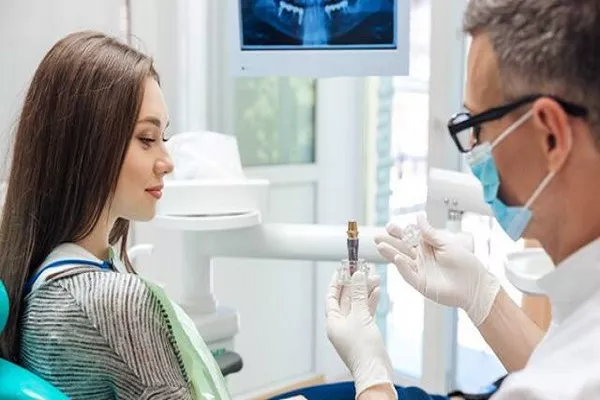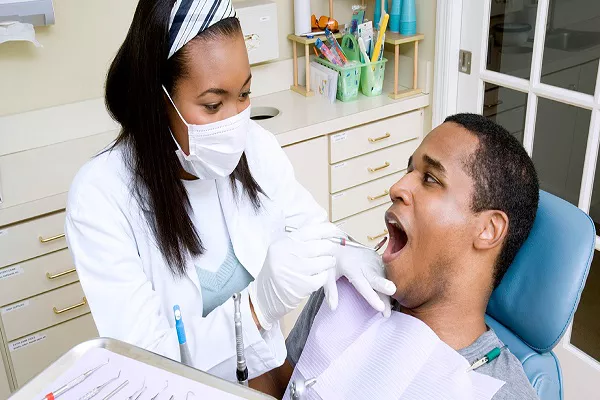Cigarette smoking is a habit that has been ingrained in our society for decades, despite the well-documented health risks associated with it. While most people are aware of the detrimental effects of smoking on lung health and the increased risk of various cancers, many may not fully understand the impact it has on oral health, specifically the discoloration of teeth. This article aims to explore the question: “What in cigarettes makes your teeth yellow?” by delving into the science behind it, the chemicals involved, and the extent of the damage caused.
Understanding the Anatomy of Teeth
Before we delve into the reasons why smoking leads to yellowed teeth, it’s essential to understand the basic anatomy of teeth. Teeth consist of three primary layers:
Enamel: The outermost layer, enamel, is a hard, protective coating that covers the tooth‘s crown. It is responsible for the white appearance of teeth.
Dentin: Beneath the enamel lies dentin, a calcified tissue that is naturally yellowish in color.
Pulp: The innermost layer contains the pulp, which houses nerves, blood vessels, and connective tissues.
The enamel is what gives teeth their white appearance, and maintaining its integrity is crucial for a healthy smile.
How Smoking Causes Teeth Discoloration
Smoking tobacco products, such as cigarettes, cigars, and pipes, exposes your teeth to a multitude of harmful chemicals. These chemicals are responsible for staining teeth and causing them to become yellow over time. Here are the key factors contributing to teeth discoloration caused by smoking:
Tar: Tar is a sticky substance that forms when tobacco is burned. It contains numerous dark-colored compounds that readily adhere to the enamel surface. Over time, the accumulation of tar on teeth leads to noticeable staining.
Nicotine: Nicotine is an addictive compound found in tobacco. While it doesn’t directly cause teeth staining, it plays a role in the discoloration process. Nicotine reduces saliva production in the mouth, leading to a dry environment that encourages the buildup of stains on teeth.
Heat: Smoking involves inhaling hot gases and particles, which can contribute to the breakdown of the enamel’s mineral structure. Weakened enamel is more susceptible to staining.
Reduced Blood Flow: Smoking restricts blood flow to the gums and other oral tissues. This reduced blood flow impairs the body’s ability to repair damaged enamel and remove stains, making teeth more prone to discoloration.
Chemical Compounds: Cigarette smoke contains a range of chemicals, many of which can react with enamel and dentin, altering their color. Some of these compounds are naturally dark or have a staining effect.
The Science Behind Yellowing Teeth
The yellowing of teeth due to smoking is a gradual process influenced by both extrinsic (external) and intrinsic (internal) factors. Extrinsic stains are those that occur on the surface of the enamel, while intrinsic stains affect the dentin layer beneath. Let’s explore these processes in more detail:
Extrinsic Stains: Extrinsic stains are caused by substances that come into contact with the enamel. In the case of smoking, the tar and other chemicals in cigarette smoke adhere to the enamel, creating visible discoloration. Regular brushing and professional dental cleanings can help remove these extrinsic stains to some extent.
Intrinsic Stains: Intrinsic staining occurs when chemicals from cigarette smoke penetrate the enamel and affect the dentin layer beneath. Dentin is naturally yellowish, so any changes to its color are more noticeable. Intrinsic staining is often more challenging to treat and may require teeth-whitening procedures.
The Progression of Teeth Discoloration
Teeth discoloration caused by smoking is a progressive issue. Initially, it may manifest as light yellow stains on the enamel’s surface. Over time, if smoking continues, these stains can become more pronounced and take on a brownish hue. In severe cases, teeth may appear almost black or gray, particularly if smoking is accompanied by other factors like heavy coffee or tea consumption.
Preventing and Treating Yellowed Teeth
If you’re concerned about the yellowing of your teeth due to smoking, there are steps you can take to prevent further staining and, in some cases, reverse the damage:
Quit Smoking: The most effective way to prevent further teeth discoloration is to quit smoking. This will not only benefit your oral health but also significantly improve your overall well-being.
Maintain Good Oral Hygiene: Brush your teeth at least twice a day and floss daily to remove surface stains and prevent plaque buildup.
Professional Dental Cleanings: Visit your dentist regularly for professional cleanings. Dental hygienists can remove extrinsic stains that brushing alone cannot.
Teeth Whitening: Consider professional teeth-whitening treatments, such as in-office bleaching or take-home kits prescribed by your dentist, to address intrinsic stains.
Limit Staining Foods and Drinks: Reduce consumption of foods and beverages that can stain teeth, such as coffee, tea, red wine, and dark berries.
Use Whitening Toothpaste: Some whitening toothpaste products can help reduce surface stains, but they may not be effective for intrinsic stains.
Conclusion
Smoking is a leading cause of teeth discoloration, resulting in yellowed and stained teeth over time. The combination of tar, nicotine, heat, reduced blood flow, and various chemical compounds in cigarette smoke contribute to this undesirable effect. Understanding the science behind teeth staining caused by smoking is crucial for individuals looking to preserve their oral health and maintain a bright smile.
While quitting smoking is the most effective way to prevent further staining and improve overall health, there are also dental treatments and good oral hygiene practices that can help address and mitigate the impact of smoking on teeth discoloration. Taking proactive steps to care for your oral health can lead to a brighter, whiter smile and a healthier future.
Related Topics:






























